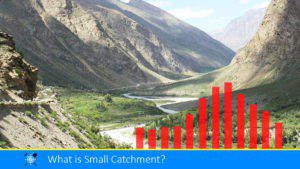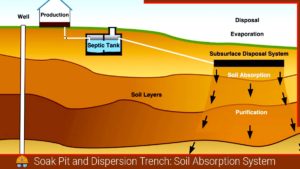What is Unit Hydrograph?
A unit hydrograph (UH) is a graphical representation of the runoff response of a watershed to a unit amount of rainfall over a specific duration. It is a fundamental concept in hydrology used to predict the flow rate of a river or stream in response to a rainfall event. The concept of unit hydrograph was first proposed by L.K. Sherman in the year 1932. The unit volume is representative of the runoff generated by 1 cm (1 inch) of effective rainfall that is evenly distributed across the entire basin area.
A UH is unique to a particular watershed and corresponds to a specific duration of effective rainfall. It can be designated as a 1-hour, 6-hour, 24-hour UH, or any other period up to the time it takes for direct runoff to reach its peak at the outlet of the watershed. Therefore, a single watershed can have multiple unit hydrographs, each corresponding to a different duration of effective rainfall.
It assumes that the rainfall is evenly distributed over the watershed and that the runoff response is linear and time-invariant. In other words, it assumes that the watershed’s response to a certain amount of rainfall is always the same regardless of when the rainfall occurred.
To construct a unit hydrograph, historical rainfall and runoff data are analyzed for a specific watershed. The process involves dividing a storm event into a series of smaller time intervals and determining the corresponding runoff volume for each interval. The resulting hydrograph represents the temporal distribution of the runoff volume.
The unit hydrograph is often presented as a graph with time on the x-axis and discharge or flow rate on the y-axis. It provides a simplified representation of the watershed’s response to rainfall, allowing hydrologists and engineers to estimate the hydrological response for different storm durations or intensities.
The unit hydrograph concept is widely used in hydrological modelling, flood forecasting, and water resources engineering. It provides a valuable tool for understanding and predicting the effects of rainfall events on a watershed’s hydrology.
Unit Hydrograph Theory
The theory of unit hydrograph is based on the concept of time invariance and linearity of the watershed’s response to rainfall. According to this theory, the shape of the hydrograph resulting from a unit amount of rainfall remains constant regardless of the timing or duration of the rainfall event.
Assumption of Unit Hydrograph Theory
The assumptions of unit hydrograph theory must be properly understood before applying it to actual problems, as these assumptions impose certain limitations which must be carefully noted. The various assumptions are given below:
- The effective rainfall is uniformly distributed within its duration or specified period.
- The effective rainfall is uniformly distributed throughout the whole area of the drainage basin.
- The base or time duration of the hydrograph of a direct run-off due to an effective rainfall of unit duration is constant.
- The ordinates of direct run-off of common base-time are directly proportional to the total amount of direct run-off represented by each hydrograph.
- For a given drainage basin the hydrograph of run-off due to a given period of rainfall reflects all the combined physical characteristics of the basin.
Construction of Unit Hydrograph
The following are the steps for constructing a UH of some unit duration from a storm hydrograph of the same unit duration:
- From the past records, select some unit period of intense rainfall duration corresponding to an isolated storm uniformly distributed over the area.
- From the past records of the river discharge for that storm, plot the storm hydrograph for some days before and after the period of rainfall of that unit duration.
Limitation of Unit Hydrograph
While the unit hydrograph is a widely used and valuable tool in hydrological analysis, it does have some limitations that should be considered. Here are a few limitations of the UH.
- Linearity Assumption: It assumes linearity, meaning that the runoff response is directly proportional to the amount of rainfall. However, the watershed’s response may not always be linear. Nonlinearities can arise due to factors such as antecedent moisture conditions, soil properties, vegetation cover, and infiltration-excess runoff mechanisms. It may not accurately represent the actual hydrological response under such conditions.
- Time Invariance Assumption: The unit hydrograph assumes that the shape of the hydrograph resulting from a unit amount of rainfall is constant over time. However, in many cases, the hydrologic response can vary with time due to changes in land use, urbanization, and hydrological processes within the watershed. These temporal variations may not be captured by a single-unit hydrograph.
- Homogeneity Assumption: It assumes that the watershed is homogeneous, meaning that the response to rainfall is uniform across the entire watershed. However, watersheds are often characterized by spatial heterogeneity in terms of soil types, land cover, topography, and land use. This heterogeneity can influence the hydrological response, and a single-unit hydrograph may not adequately represent the response of the entire watershed.
- Limited Data Availability: Constructing a reliable UH requires extensive rainfall and runoff data for a specific watershed. However, obtaining high-quality and long-term data can be challenging, particularly in regions with limited monitoring networks. The accuracy of the UH depends on the availability and quality of the data used in its derivation.
- Limited Application for Extreme Events: The unit hydrograph is primarily applicable for moderate rainfall events and small to medium-sized watersheds. For extreme events, such as intense storms or hurricanes, the hydrological response may deviate significantly from the assumptions of the unit hydrograph. In such cases, alternative hydrological models or techniques may be required to capture the extreme event characteristics.
- Sensitivity to Parameter Selection: The shape and characteristics of the UH can be influenced by various parameters and assumptions made during its derivation. These parameters include time intervals, lag time, and the shape of the hydrograph. Different parameter choices can lead to different unit hydrographs and, consequently, different predictions of runoff. Careful selection and calibration of parameters are necessary to ensure accurate results.
Application of Unit Hydrograph
The UH has various applications in hydrology and water resources engineering. Some of the key applications include:
- Flood Prediction: The unit hydrograph is commonly used to predict flood peaks and estimate the magnitude and timing of peak flows in rivers and streams. By convolving the UH with the rainfall hyetograph for a specific storm event, the resulting hydrograph can be used to forecast the expected flow rates and flood volumes.
- Floodplain Mapping: Unit hydrographs are employed to delineate floodplains and identify areas that are prone to flooding. By simulating the response of a watershed to different rainfall scenarios using unit hydrographs, flood extents can be predicted, aiding in land use planning and flood risk management.
- Stormwater Management: Unit hydrographs are crucial in designing stormwater management systems, such as detention basins and stormwater ponds. By estimating the hydrological response of a watershed to different storm events using unit hydrographs, engineers can determine the required storage capacity and design parameters for stormwater infrastructure.
- Watershed Modeling: The UH serves as a fundamental component in the hydrological modelling of watersheds. It can be used to simulate the response of a watershed to different rainfall inputs, allowing for the assessment of water availability, water balance, and the effects of land use changes on the hydrological system.
- River and Reservoir Operations: Unit hydrographs are valuable in water resources management, particularly in optimizing river and reservoir operations. By utilizing unit hydrographs to predict inflows, water managers can make informed decisions regarding reservoir releases, flood control measures, and water allocation.
- Bridge and Culvert Design: Unit hydrographs aid in designing hydraulic structures, such as bridges and culverts, by estimating flow rates during storm events. These estimates are crucial for ensuring that the hydraulic capacity of the structures is adequate to handle the expected runoff.
- Environmental Impact Assessment: The UH can be used to assess the potential impacts of land development or land use changes on a watershed’s hydrology. By comparing the unit hydrographs before and after the proposed changes, the effects on peak flows, runoff volumes, and water quality can be evaluated.
FAQs:
Q: What are the assumptions made in the unit hydrograph?
Ans: The assumptions made in the unit hydrograph are:
1. The effective rainfall is uniformly distributed within its duration or specified period.
2. The effective rainfall is uniformly distributed throughout the whole area of the drainage basin.
3. The base or time duration of the hydrograph of a direct run-off due to an effective rainfall of unit duration is constant.
4. The ordinates of direct run-off of common base-time are directly proportional to the total amount of direct run-off represented by each hydrograph.
5. For a given drainage basin the hydrograph of run-off due to a given period of rainfall reflects all the combined physical characteristics of the basin.
Q: What are the characteristics of a unit hydrograph?
Ans: The characteristics of a unit hydrograph include time intervals, lag time, and the shape of the hydrograph.
Q: What is the purpose of a unit hydrograph?
Ans: The role of unit hydrograph in hydrology is to provide an estimate of direct runoff hydrograph resulting from given excess rainfall hyetograph. In order to use a unit hydrograph as a tool for predicting direct runoff hydrograph, we first need to derive a unit hydrograph for a given watershed.
References:
- Punmia, B.C. (2005). Environmental Engineering (vol.-1). Water Supply Engineering. Laxmi Publications (P) Ltd. 22 Golden House, Daryaganj New Delhi-110002
- Garg, S. K. (September 2, 2007). Environmental Engineering (vol.-1) Water Supply Engineering. Khanna Publishers. 2-B, Nath Market, Nai Sarak, New Delhi-110006
- Hydrograph. (2023, May 19). In Wikipedia. https://en.wikipedia.org/wiki/Hydrograph
Also, read:
![]()







